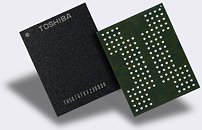
Transcend Empowers Smart Applications With The New U.2 NVMe SSD UTE210T
Transcend Information (Transcend), a leading manufacturer of embedded memory products, is proud to release the latest U.2 NVMe SSD, the UTE210T. Designed for generative AI, high-performance computing (HPC), and big data analytics, this powerful SSD is built with the 112-layer 3D NAND flash, an 8-channel controller, and a PCIe Gen 4x4 interface. Experience high speeds, low latency, and minimal power consumption with your systems, but most of all, enjoy sequential R/W speeds of up to 7,200/6,500 MB/s and stable and reliable system performance that supports various applications of use.
Compliant with the NVMe 1.4 specification, Transcend's UTE210T comes bundled with a U.2 connector, enabling the drive to configure the PCIe interface with the U.2 backplane, ultimately enhancing transfer stability without compromising your servers. To address the demanding workloads associated with AI, its built-in DRAM provides exceptional random read speeds, which not only reduces NAND flash Program/Erase cycles (P/E cycles), but effectively extends drive lifespan to help manage a wide range of workloads. The UTE210T comes with up to 8 TB of storage capacity, ensuring servers and data centers are able to process vast amounts of data without compromising system performance.
Compliant with the NVMe 1.4 specification, Transcend's UTE210T comes bundled with a U.2 connector, enabling the drive to configure the PCIe interface with the U.2 backplane, ultimately enhancing transfer stability without compromising your servers. To address the demanding workloads associated with AI, its built-in DRAM provides exceptional random read speeds, which not only reduces NAND flash Program/Erase cycles (P/E cycles), but effectively extends drive lifespan to help manage a wide range of workloads. The UTE210T comes with up to 8 TB of storage capacity, ensuring servers and data centers are able to process vast amounts of data without compromising system performance.



